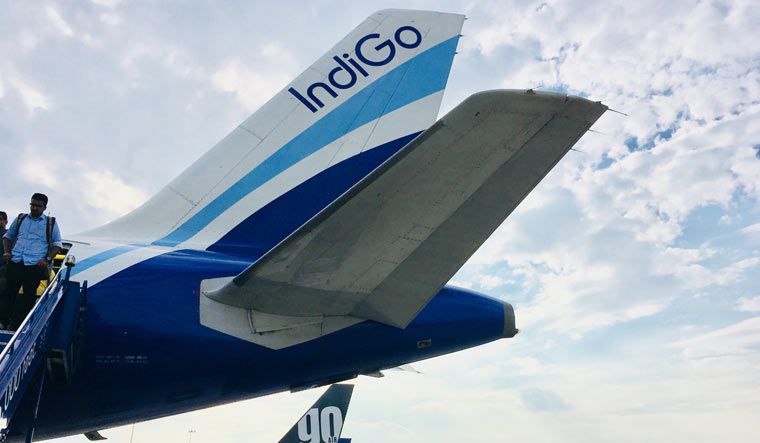The second wave of COVID-19 in India is expected to push the recovery of air traffic to the end of the FY23 fiscal year. In May 2021, average daily domestic passenger traffic halved from its levels in February 2021—reaching 10 per cent of the pre-pandemic levels seen in May 2019.
As per a recent report by CRISIL, despite the challenges of a slump in air traffic the credit quality of airport operators in a few metro cities will continue to be supported by their strong business models and healthy liquidity covers amid low debt servicing requirements this fiscal. CRISIL based its report on an analysis of the top four private airports in the country— Delhi, Mumbai, Bengaluru and Hyderabad—which accounted for 90 per cent of air passenger traffic handled by private airports in India and 50 per cent of all air traffic during the last fiscal.
The report attributes the localized lockdowns, night curfews and other restrictions on the movement of people as factors driving the nosedive in passenger traffic at airports.
“Second wave will push back the revival of business travel and the pick-up of international traffic, which account for over half of the overall air traffic. Given this backdrop, we now expect traffic volumes this fiscal to be 60 per cent of fiscal 2020 levels and recovery to pre-pandemic levels happening only by the fourth quarter of fiscal 2023,” observed Manish Gupta, Senior Director, CRISIL Ratings.
The report says traffic volumes are expected to rebound once the present affliction curve starts to flatten. A ramp-up in domestic traffic was seen after the recommencement of airport operations in May 2020, with total passenger traffic reaching 60 of fiscal 2020 levels by February 2021, i.e. within nine months of the first domestic travel advisory. However, the CRISIL report observes that a much faster recovery is expected this time based on the ongoing vaccination drive, push from the government to limit the economic impact and recovery trajectory seen in countries that have emerged from a second wave.
Experts at CRISIL observe that recovery indicators from the United States and Europe are positive and exhibit faster recovery post the second wave. For instance, in the United States, once the infection curve started to flatten from February 2021 onwards, passenger traffic volumes climbed swiftly from less than 40 per cent in February 2021 to 70 per cent in May 2021, compared to respective pre-pandemic levels. Still, the normalization in India is expected only by the fourth quarter of fiscal 2023.
It is expected that this will lead to a loss of Rs 900 crore revenue from the earlier pre-second wave expectation of Rs 7,500 crores of revenue in fiscal 2022. CRISIL, however, expects that a fall in revenues will not impact the credit profiles of airports because of their strong business models and healthy liquidity covers that includes cash and un-utilized working capital lines Also these airports are in metro cities, which will see a quick return of traffic and revenue when the overall economy stabilizes.
The CRISIL report points out that the airport regulations guarantee a fixed return on the aeronautical capital expenditure incurred (to cater to passenger traffic, cargo, airport landing & parking infra) and any loss in aeronautical revenue (50 per cent of total revenue) due to lower than expected traffic in present five year period is compensated in the next five years period. Although, the remaining half of revenue from non-aeronautical activities is expected to remain sluggish as the revenue stream depends upon passenger footfall and their purchase and consumption propensity. However since these airports have limited competition in their geographical area, a strong pick up is likely once the traffic comes back.
Airlines face a grim situation. IndiGo this week reported its fifth straight quarterly loss and its consolidated net losses widened to Rs 1147.16 crore during the March quarter from Rs 620.14 crore during the December quarter of FY21. For IndiGo cash burn rose to Rs 190 million in Q4 FY21 up from Rs 150 million in 3Q FY21. A report from Motilal Oswal indicates that cash burn for the airline is expected to be higher in 1Q FY22 as daily passenger demand falls to 80,000 passengers from the highs of 300,000 at the end of February 2021. The airline expects the February 2021 demand to return only by the end of 3Q FY22.
The Motilal report says that the second Covid wave has impacted the recovery of the airline by at least three quarters. Experts at Motilal estimate losses of Rs 53 billion in FY22. The report points out that the biggest concern for the airline is a low customer load factor due to the lack of demand, which is likely to reverse with the increase in the pace of vaccination. For instance, pent-up demand led to a sharp increase in daily passengers in the first week of June 2021.





